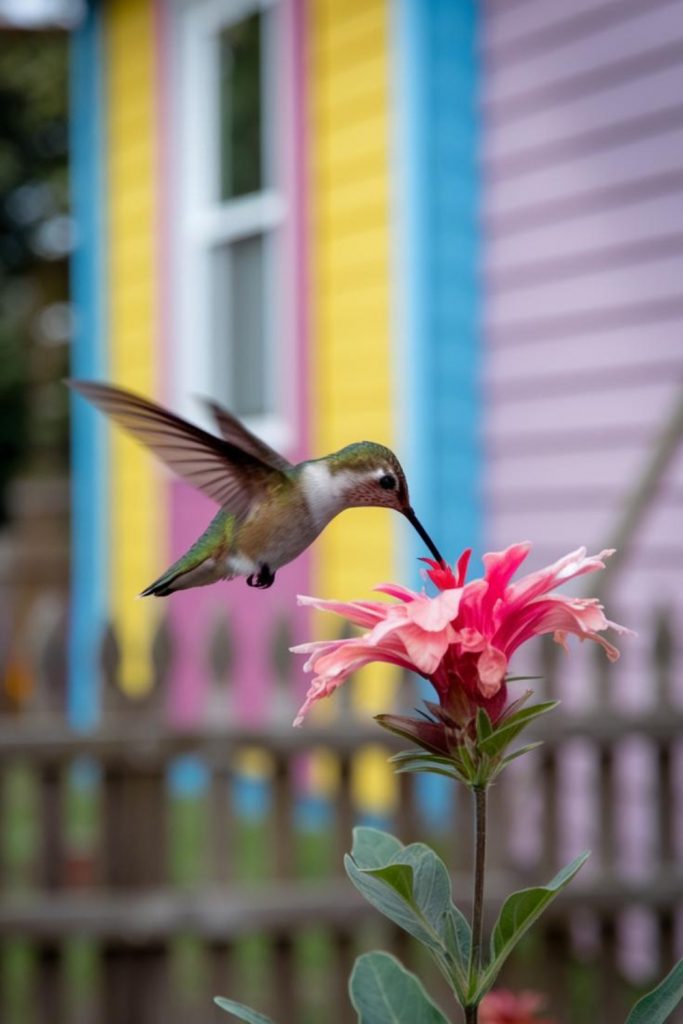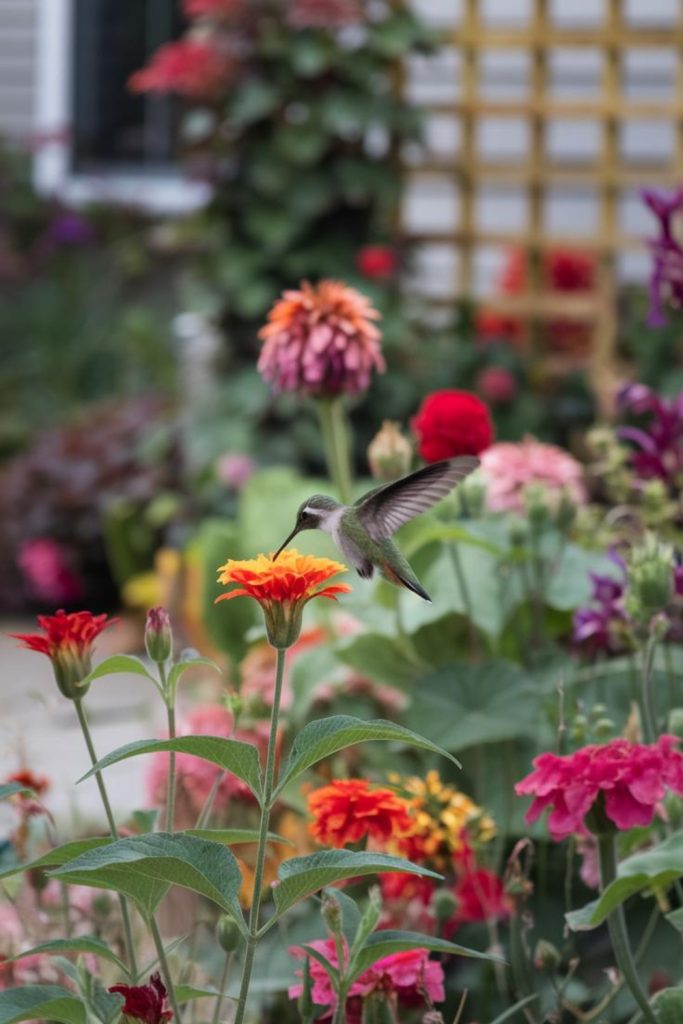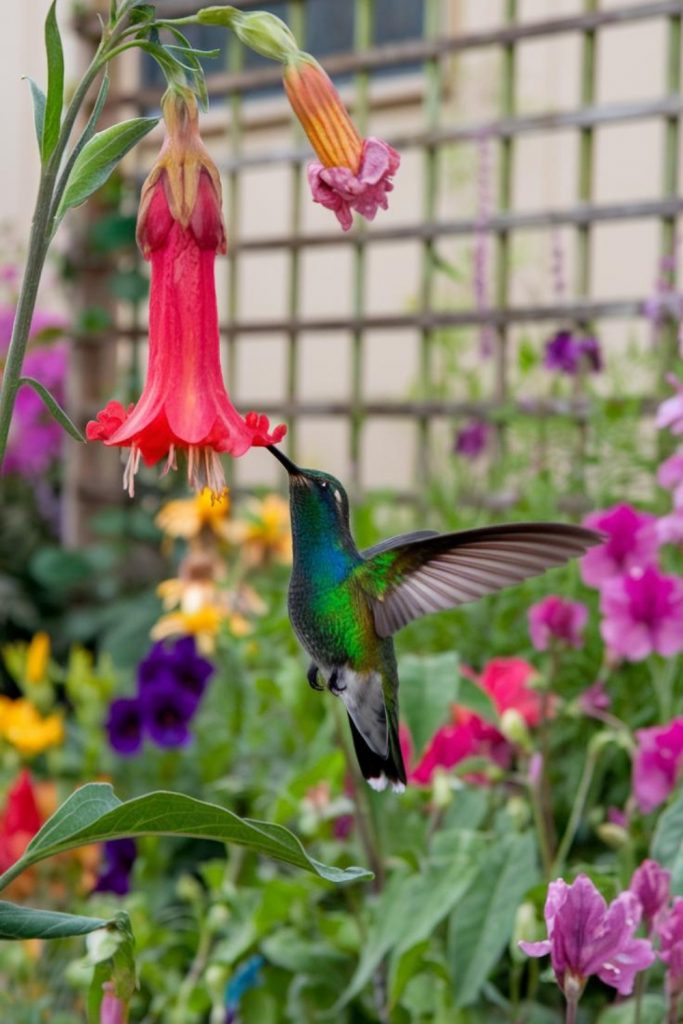Hummingbirds have an endless craving for sugary nectar. You’ll often see them with their long beaks deep in bright, tube-shaped flowers, drinking up this sweet liquid. But what makes nectar so important for fueling their incredible flying abilities?
In this blog, we’ll uncover why these tiny birds rely so heavily on nectar. From the ideal balance of sugars to the unique way hummingbirds extract nutrients, you’ll learn all about their extraordinary nectar addiction!
Related Post To Read: 33 Top Plants That Attract Hummingbirds.
Nectar: The Perfect Energy Boost for Hummingbirds
Flowers produce nectar to entice pollinators like hummingbirds to visit. This sugary secretion serves up the ideal nutrition profile for fueling hummingbirds’ extreme energy demands.
Super Fast Metabolism of Hummingbirds
Hummingbirds need a lot of calories! Just to survive, they have to take in more than half their body weight in nectar each day. Their teeny bodies run on a sky-high metabolism that requires massive amounts of energy.
And to perform their signature hovering feats, mate, migrate long distances, or escape predators takes even more fuel. So, nectar’s concentrated sugar content delivers the dense calories hummingbirds depend on.
Balancing Glucose and Fructose
Nectar1 contains three key sugars – glucose, fructose, and sucrose. The optimal ratio of glucose to fructose maximizes the rate at which hummingbirds can digest and metabolize these sugars for energy.
Too much glucose would overwhelm their digestive system. But nectar produced by hummingbird-pollinated flowers has adapted the perfect proportion of each sugar just for hummingbirds!

Getting the Most Out of Every Drop of Nectar
Hummingbirds are perfectly adapted to extract maximum energy from nectar. Their special feeding skills help them make the most of every drop, giving them the fuel they need to keep going.
Built for Nectar Extraction
Hummingbirds have tongues with forked tips perfectly designed to lap up liquid. As they probe flowers, their long tongues unfurl to soak up nectar.
Grooves on the surface, then channel the nectar back to the throat so they can swallow up to 10 times per second! This unique anatomical adaptation means no nectar goes to waste.
Minimizing Energy Expenditure
Hovering right next to flowers allows hummingbirds to minimize energy spent reaching food. Compare that to a chickadee that has to constantly land and then take off again from branch to branch.
So, rather than waste calories foraging over a large area, hummingbirds conserve energy by utilizing flower clusters. This further optimizes the payoff from nectar’s rich sugar content.

Nectar Shaped the Evolution of Hummingbirds
Scientists believe hummingbirds evolved in South America, where they had plenty of nectar-rich flowers. Over time, hummingbirds developed special traits like unique beak shapes, grooved tongues, and hovering skills to better access nectar. This evolution helped them fill roles that other birds couldn’t, all because of their strong connection to nectar!
Nectar: Fueling Hummingbirds’ High-Energy Lives
Hummingbirds have incredibly fast metabolisms and need a lot of energy to keep up with their constant activity. The sugar in nectar is the perfect fuel for their busy lifestyle. With special beaks and tongues, they can easily access the nectar that powers their amazing abilities.
So, when you see a hummingbird sipping nectar, remember that this sweet treat is what keeps them flying so effortlessly. Their love for nectar is key to their aerial mastery!

Final Thought
Hummingbirds’ relationship with nectar is a beautiful example of nature’s balance. Their unique traits, developed over millions of years, allow them to thrive on this high-energy food. Every sip of nectar fuels their incredible speed and grace in the air, making them one of nature’s true wonders.
Useful Links:
Related Posts to Read:
References:
- About Hummingbird (Link).
